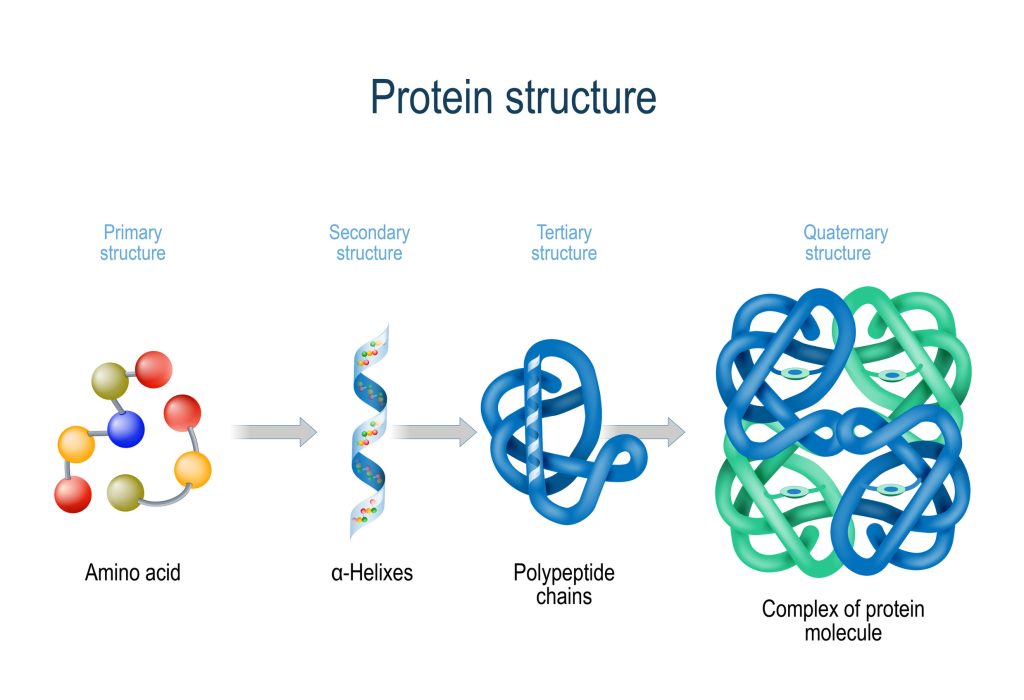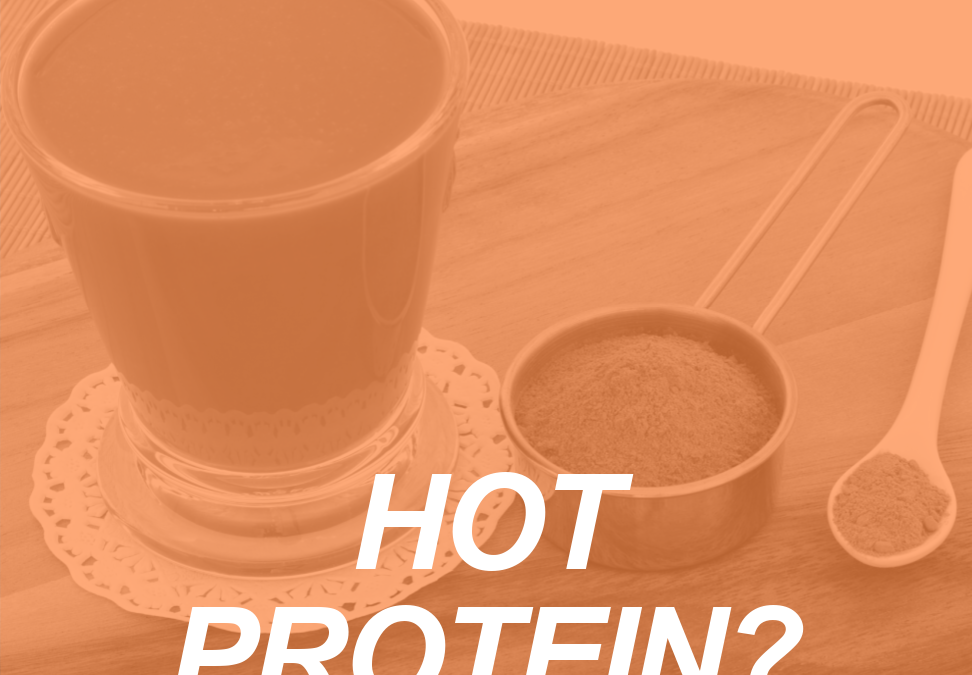In order for our personal training clients to build muscle, one must consume a significant amount of lean protein, often in the form of protein powder. Many debates exist regarding the best way to ingest the right types of protein. Whey protein, considered the ideal source of protein for consumption immediately post-workout, receives a lot of attention in the industry.
A fast-digesting protein, whey easily gets shuttled into the bloodstream, where it can set about its task of repairing damaged muscle tissue and ideally rebuilding it larger and stronger.
Most athletes consume protein in the form of a shake, combining powdered protein in the form of whey isolate blends with a room-temperature or refrigerated liquid (water, milk, fruit juice). However, recipes abound in the bodybuilding community for creative and delicious ways to incorporate whey into everyday foods, thereby increasing their nutrient density. How does the integrity of protein hold up, however when mixed with hot liquids?
Building Block Basics
Clients often ask whether or not heating whey protein powder while preparing a recipe will destroy its potency. To fully address this question, we need to recall the basic construction of a protein molecule. Created from a set of 20 amino acids, these building blocks link together in a variety of lengths to form polypeptides chains.
Each protein consists of one or more unique polypeptide chains, typically as a globular complex. Scientists make reference to four levels of amino acid configuration:

Levels of protein structure from amino acids to Complex of protein molecule. Protein is a polymer (polypeptide) that formed from sequences of amino acids.
Primary Structure ~ the linear sequence of amino acids, as determined by the genetic code
Secondary Structure ~ the formation of a regular pattern of polypeptide chains, largely due to hydrogen bonding
Tertiary Structure ~ the 3-dimensional globular construct of the polypeptide chain
Quaternary structure ~ the clustering of several protein chains into a final specific shape
Denaturation of Protein Powders
When subject to high heat, as in cooking, a process called protein denaturation occurs. This results in an alteration of the 3-dimensional structure of the protein, literally an “unfolding” of the protein. Some proteins, such as enzymes, actually lose their biological activity once they have become denatured, owning largely to the fact that heat denatures the quaternary, tertiary, and secondary structures of proteins.
However, the primary structure of a protein, the actual sequence of amino acids held together by covalent peptide bonds, remains intact during denaturation, maintaining the integrity of its nutritional value. Indeed, the denaturing process often renders a protein more digestible than its native structure.
Cooking a raw egg, for example, causes the albumin to lose its 3-dimensional structure, but renders it more digestible than in its original form. Upon consumption of protein, our gastric juices in the digestive tract break the complex down into individual amino acids. Once “reassembled” in the cells, the body can absorb this potent source of dietary protein. Cooked or uncooked, therefore, the body knows how to access and utilize the protein.
Cooking/Baking with Whey Powder
The University of Wisconsin’s Center for Dairy Research preaches the following regarding baking with protein powder: “... Whey may also be used in baked products to add additional nutritional benefits…In general, protein solubility is affected by heat and most foods are heat-processed, whether it involves baking bread, cooking caramel, or retorting soup for preservation purposes…. During baking, some of the proteins may become denatured but as this is a structural change, the nutritional content of the whey remains and thus provides essential amino acids which are part of a healthy diet.”
Temperature and Nutritional Integrity
We can consider whey protein isolate as no different than any other collection of amino acids strung together to form peptide bonds. As long as its primary structure is not damaged during heat denaturation, it should retain most if not all of its nutrient value.
However, one should still exercise care when adding whey to a warm food; the change in quaternary structure may render the food akin to wallpaper paste! Any bodybuilder attempting to add whey powder to oatmeal prior to cooking will encounter just such a mess, greatly reducing the desirability of the end product. Adding a scoop of whey protein to oatmeal promptly upon removing it from the stove enables it to mix evenly, thereby still possessing visual appeal.
Data published in the Journal of Dairy Research states that direct, long-lasting heat damages “amino acid bioavailability,” meaning the body must work harder to digest and utilize the protein. Whey powder begins to lose digestibility upon prolonged exposure to temperatures over 167+ degrees Fahrenheit.
However, whey protein concentrate cooked at 194 degrees Fahrenheit for 5 minutes tends to retain 80% of its solubility. Scientists found that only upon heating whey protein at 250 degrees F. for 83 minutes will its nutritional panel take a serious hit.
Freezing and Bioavailability of Protein Powder
Some clients may ask trainers whether freezing protein powder (as in a homemade protein “slushie” or ice cream) reduces its bioavailability. Not nutritionally, according to Marni Sumbal, RD, CSSD, LD/N and owner of a coaching and nutrition company.
“You shouldn’t worry about losing nutrients from freezing a smoothie or protein powder and water,” Sumbal says. “Freezing overnight should keep the protein intact, but be sure to mix completely before freezing so you have a well-mixed drink when you thaw it out in the fridge,” she adds. While heating/freezing may somewhat alter the product’s texture and taste, the nutritional benefit to the body remains constant.
Harmonious Blending
If our personal training clients wish to expand their protein powder repertoire to include beverages other than shakes, specifically something warm to drink on a cold morning, trainers can offer this easy solution. To mix protein powder into a hot drink, first mix the whey powder with a room-temperature liquid. Stir thoroughly for 2-3 minutes, creating a “paste”, and add that to boiling water, warm milk, or even coffee.
This process minimizes the appearance of those less-than-appetizing clumps of undissolved floating protein, and gives the beverage a significant nutritional boost. Use this method when adding protein powders to soups, too, as a thickening agent.
Many recipes for homemade protein bars include whey powder. If the desired recipe calls for baking, try a lower temperature (225 degrees as opposed to 350 degrees) and slightly extend the baking time. The beautiful end product, now free from any clumps of unmixed whey, has retained all the nutritional value of its raw ingredients.
With a little time, patience, and experimentation, you too can become an expert mixologist in your own kitchen. Take protein consumption to new heights, and alleviate the boredom of repetitive post-workout shakes.
[sc name=”nutrition” ][/sc]
References
https://fitness.stackexchange.com/questions/3075/protein-mixing-with-hot-liquids
https://www.sciencedirect.com/science/article/pii/S0022030216000187
https://pubmed.ncbi.nlm.nih.gov/30195515/
https://www.mensjournal.com/food-drink/does-freezing-or-cooking-protein-powder-ruin-it/
https://proteinpow.com/wont-protein-denature-if-its-heated
Cathleen Kronemer is an NFPT CEC writer and a member of the NFPT Certification Council Board. Cathleen is an AFAA-Certified Group Exercise Instructor, NSCA-Certified Personal Trainer, ACE-Certified Health Coach, former competitive bodybuilder and freelance writer. She is employed at the Jewish Community Center in St. Louis, MO. Cathleen has been involved in the fitness industry for over three decades. Feel free to contact her at trainhard@kronemer.com. She welcomes your feedback and your comments!


